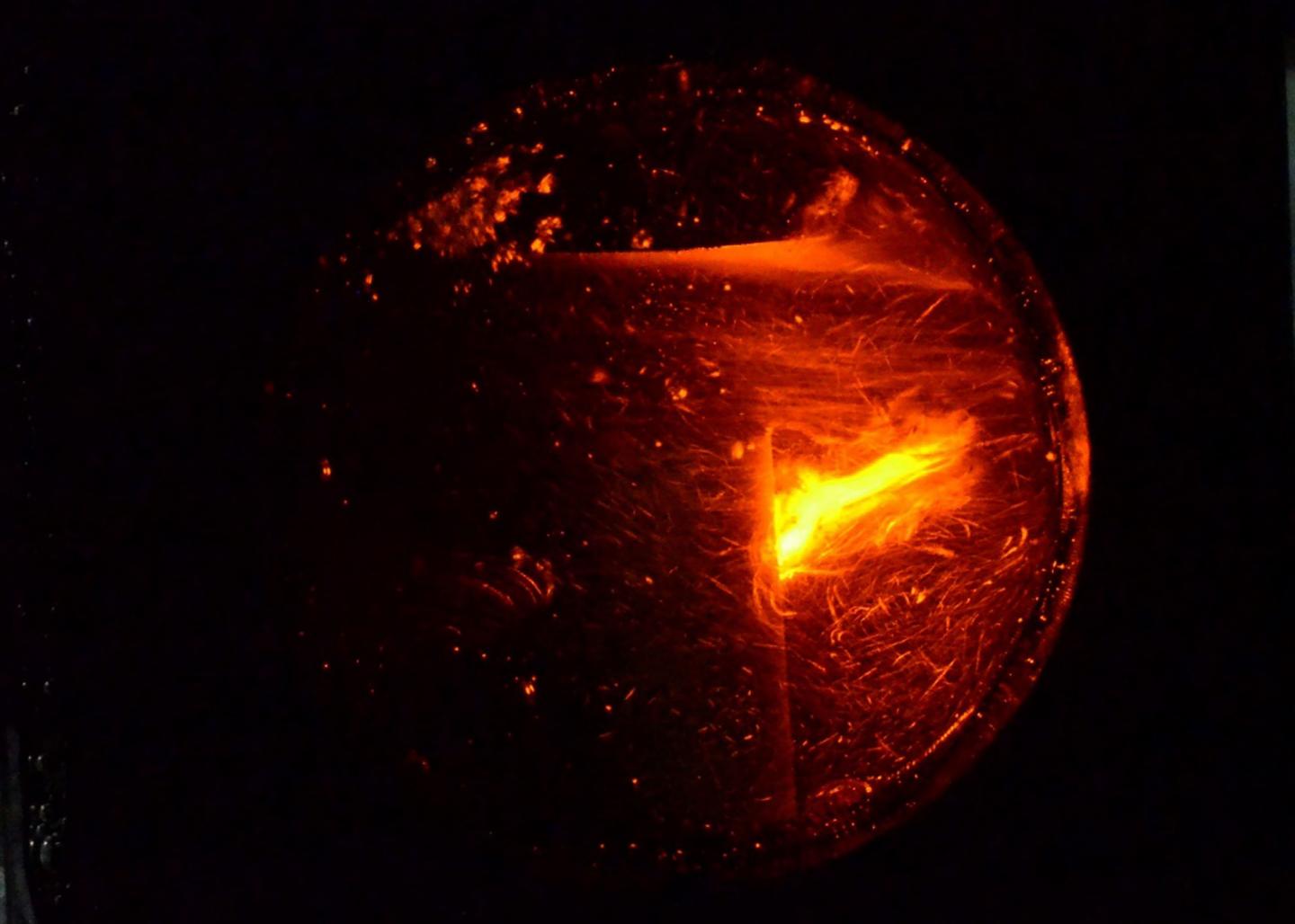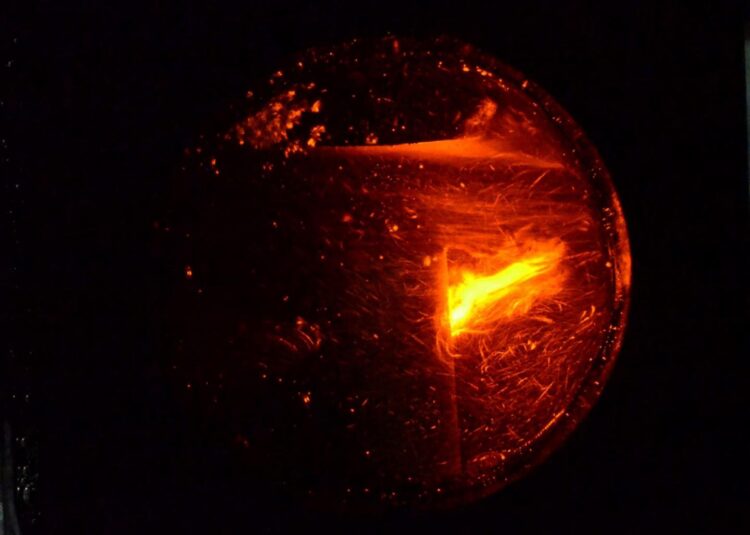With the help of microwave pulses, plasma induced into polymer solutions helps break down thick material, lowering the viscosity and possibly breaking polymer chains.

Credit: B. Honnorat, V. Brüser, and J.F. Kolb
WASHINGTON, September 22, 2020 — Producing biogas from the bacterial breakdown of biomass presents options for a greener energy future, but the complex composition of biomass comes with a long list of challenges.
Cellulose and woody lignocellulose in biomass are especially hard for bacteria to digest, making the process inefficient. Chemical, physical, or mechanical processes, or several of them combined, can be used for pretreatment to make biomass easier to digest, but many of the current solutions are expensive or inefficient or rely on corrosive chemicals.
In research supported by the European Regional Development Fund, published in AIP Advances, by AIP Publishing, researchers at the Leibniz Institute of Plasma Science and Technology are testing plasma formation in biomass and finding a promising method for pretreatment of biomass.
“The plasma can be seen as a reactive gas, which contains populations of particles that contain several electron volts of kinetic energy. This energy can be used to break the bond of the chemicals and break the bonds of molecules with which they interact,” author Bruno Honnorat said.
“The most surprising thing was to be able to obtain plasma discharge conditions in a moving liquid. The presence of a flow considerably complicates the situation compared to all the other experimental setups studied in the literature.”
The work involves creation of a reactor in which 2-kilowatt microwave pulses injected into a moving liquid model induce plasma formation within one millisecond. The totality of the microwave power is concentrated to a small cavity, containing less than 1 milliliter of liquid, which is heated, vaporized, and finally ignited, forming an expanding plasma bubble.
The plasma-liquid interaction forms reactive species, including oxidizing agents, such as hydroxyl radicals and hydrogen peroxides, that help break down the biomass and decrease the viscosity, or resistance to flow, of the biomass material. In partnership with an industrial agriculture partner, the process will be further tested at full scale in a biogas plant.
The authors plan to continue their work by more closely examining whether the plasma breaks the polymer chain and investigating plasma-bubble dynamics to evaluate the size and shape evolution, lifetime, and pressure of bubbles in the plasma to better understand the reactive species created in the plasma.
Their work could be used for increasing biogas production, improving the efficiency of microwave-plasma-liquid interactions, and functionalizing and modifying polymer length in polymer science.
###
The article, “Microwave plasma discharges for biomass pretreatment: Degradation of a sodium carboxymethyl cellulose model,” is authored by B. Honnorat, V. Brüser, and J.F. Kolb. The article will appear in AIP Advances on Sept. 22, 2020 (DOI: 10.1063/5.0018626). After that date, it can be accessed at https:/
ABOUT THE JOURNAL
AIP Advances is an open access journal publishing in all areas of physical sciences–applied, theoretical, and experimental. The inclusive scope of AIP Advances makes it an essential outlet for scientists across the physical sciences. See https:/
Media Contact
Larry Frum
[email protected]
Related Journal Article
http://dx.





